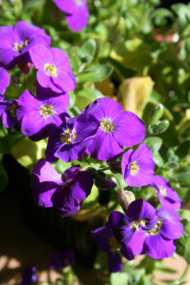
Dear Clean and Green,
Spring Clean month of April has passed and there are still Inishowen beautyspots with lots of litter. If people don't volunteer to clean up what happens?
I feel that there should be a more regular clean up - broken glass and doggy doo hinder my walks with my young family, and plastics amongst sand dunes is so abundant, it's too much for me to pick up on my beach walks.
Recently €40,000 euro was made available to the tourism industry in Inishowen. I think that some of this money would be wisely spent by tourism providers toensure regular clean ups of our environment - a main attraction for visitors.Also it would help us all be more proud of the lovely natural places Inishowen,not embarrassed and ashamed.
Thank you.
Name and address supplied
Reply
I couldn’t agree more. I know I keep talking about targeting the manufacturers of packaging but as long as advertisers keep convincing us to buy packaged products they are not going to go away any time soon. There are some positive aspects to the litter problem. There does seem to be more awareness, more and more people seem to be picking rubbish up from outside their houses, schools are getting involved in clean ups and in some areas I have noticed (e.g. the Porthaw area of Buncrana) you don’t see a pick of rubbish on the ground. This must be because the community feels that it is just not acceptable to drop litter.. If Julie’s mother sees people dropping litter she will pick it up and give it back to them. I wouldn’t dare for fear of getting thumped, but if it is done in a gentle manner then it could be effective. Spot fines of €200 euro would deter some people and youngsters could do a spot of community service around town on a Saturday morning should they get caught dropping rubbish, especially during the school lunch breaks.
At present if a dog owner wants to pick the stuff up they have to think before hand and bring a bag. They then have to carry the pongy bag with the poo in it until they find a bin. There are not many dog owners that are prepared to do that! Some counties provide pooper scoopers and purpose built bins with heavy lids on the walking routes, this helps no end, but again you need the education about the hazards of leaving the mess around. What is to be done about the dogs that are left to roam the streets and chase cars I don’t know, maybe we can issue nappies!
I realise that Inishowen still has a long way to go to become litter free, but steps are being made, and as more and more individuals take pride in their communities and take action in their own areas we can and do make a difference. Hopefully, in time, you can enjoy playing with your family in a rubbish free area!
Environmental.













